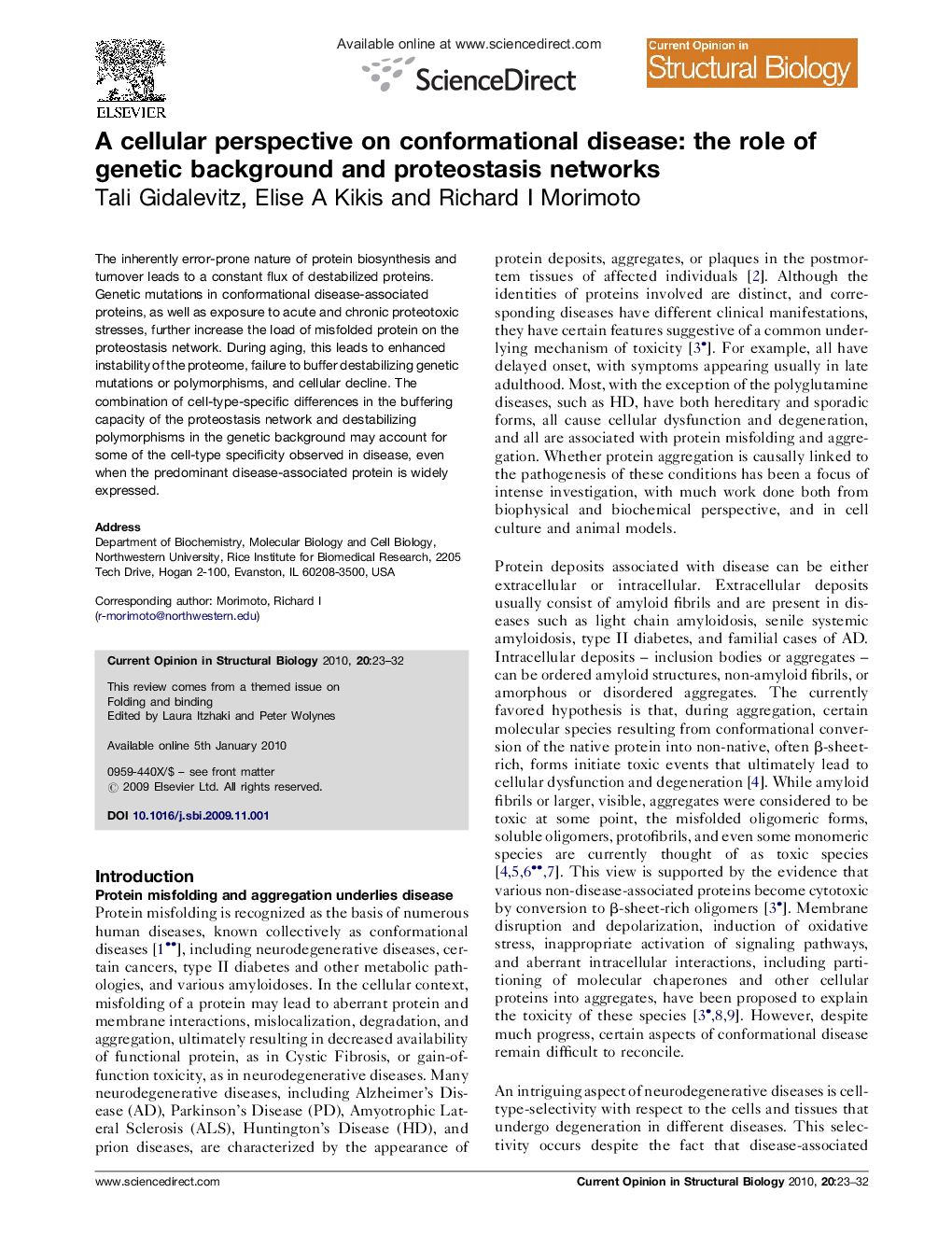| Article ID | Journal | Published Year | Pages | File Type |
|---|---|---|---|---|
| 1979481 | Current Opinion in Structural Biology | 2010 | 10 Pages |
The inherently error-prone nature of protein biosynthesis and turnover leads to a constant flux of destabilized proteins. Genetic mutations in conformational disease-associated proteins, as well as exposure to acute and chronic proteotoxic stresses, further increase the load of misfolded protein on the proteostasis network. During aging, this leads to enhanced instability of the proteome, failure to buffer destabilizing genetic mutations or polymorphisms, and cellular decline. The combination of cell-type-specific differences in the buffering capacity of the proteostasis network and destabilizing polymorphisms in the genetic background may account for some of the cell-type specificity observed in disease, even when the predominant disease-associated protein is widely expressed.
